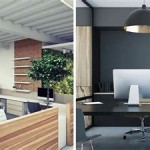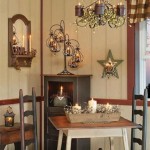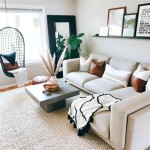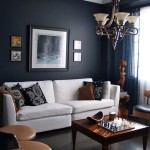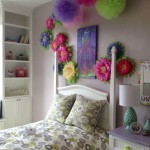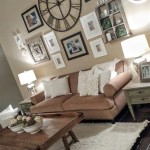How To Decorate A Small Office Space
Decorating a small office space presents unique challenges, demanding a strategic approach to maximize functionality and create a visually appealing and productive environment. Careful consideration of space, storage, furniture, and aesthetics is crucial to achieving a workspace that feels both efficient and comfortable. Effective decoration principles often involve prioritizing minimalist designs, utilizing vertical space, incorporating natural light, and carefully selecting color palettes. This article will explore key considerations and practical strategies for transforming a limited area into a highly functional and inspiring workspace.
Optimize Vertical Space for Storage and Display
In a small office, the effective use of vertical space becomes paramount. Walls should not be considered merely as boundaries, but as potential canvases for storage and displays. Implementing shelving systems, both open and closed, can significantly increase storage capacity without consuming valuable floor space. Open shelving is suitable for items frequently accessed, such as books, files, and decorative objects. Closed shelving, using cabinets or units with doors, is ideal for concealing less visually appealing items and maintaining a clutter-free environment.
Hanging wall organizers offer another efficient solution for managing smaller items. These organizers can accommodate pens, notepads, and other essential office supplies, freeing up desk space and improving accessibility. Whiteboards or corkboards can be mounted to walls to serve as collaborative spaces or personal organization tools. These boards provide a dynamic surface for brainstorming, note-taking, and displaying important reminders or inspirational images.
Consider the use of floating shelves to create a minimalist and visually appealing storage solution. Floating shelves attach directly to the wall without visible brackets, lending a clean and contemporary appearance. They are well-suited for displaying decorative items, plants, or small stacks of books. When selecting shelving, it is important to consider the weight capacity to ensure stability and prevent accidents. Choose materials that complement the existing decor and enhance the overall aesthetic of the office.
Furthermore, think about installing wall-mounted cabinets above the desk or work area. These cabinets provide ample storage space for files, documents, and other office essentials, while keeping them out of sight and minimizing clutter. Ensure that the cabinets are installed at a comfortable height for easy access and that the doors open smoothly without obstructing the workspace. Lighting can also be integrated into shelving units to provide task lighting or to highlight specific items on display. This can enhance both the functionality and the visual appeal of the space.
Maximize Natural Light and Implement Effective Lighting Strategies
Adequate lighting is crucial for creating a productive and comfortable office environment. Natural light should be maximized whenever possible. Position the desk near a window to take advantage of natural daylight, which can improve mood, reduce eye strain, and enhance overall well-being. Avoid obstructing windows with heavy curtains or blinds that block sunlight. Instead, opt for sheer curtains or adjustable blinds that allow light to filter through while maintaining privacy.
Supplement natural light with a combination of ambient, task, and accent lighting. Ambient lighting provides overall illumination for the room. Recessed lighting, ceiling fixtures, or floor lamps can be used to create a consistent level of brightness. Task lighting focuses on specific work areas, such as the desk, to provide adequate illumination for detailed tasks. A desk lamp with an adjustable arm and dimmer switch allows for customized lighting based on individual needs. Accent lighting is used to highlight specific features or decorative elements in the office. Spotlights, wall sconces, or LED strip lights can be used to draw attention to artwork, plants, or architectural details.
When selecting light bulbs, consider the color temperature and brightness. Cool white light (around 4000-5000K) is ideal for task lighting, as it provides a crisp and energizing light that improves focus and concentration. Warm white light (around 2700-3000K) is suitable for ambient lighting, as it creates a more relaxed and inviting atmosphere. LED bulbs are energy-efficient and long-lasting, making them a cost-effective choice for office lighting. Dimmable light fixtures allow for adjusting the brightness levels throughout the day, based on the amount of available natural light and the tasks being performed.
Reflective surfaces can also be used to enhance the effectiveness of lighting. Mirrors, light-colored walls, and glossy surfaces can help to bounce light around the room, making the space feel brighter and more spacious. Avoid using dark colors or matte finishes, as they tend to absorb light and can make the room feel smaller and darker. Clean windows regularly to maximize the amount of natural light entering the office. Consider the placement of light fixtures carefully to avoid glare and shadows, which can cause eye strain and discomfort. Implementing a well-designed lighting plan can significantly improve the functionality and comfort of a small office space.
Choose Multi-Functional Furniture and Smart Storage Solutions
In a small office, furniture should be carefully selected to maximize functionality and minimize clutter. Multi-functional furniture pieces that serve more than one purpose are particularly valuable. For example, a desk with built-in storage drawers or shelves can provide ample space for storing office supplies and files, while a storage ottoman can serve as both a seat and a hidden storage compartment. A foldable or convertible desk can be easily stowed away when not in use, creating more space for other activities.
Select furniture that is appropriately sized for the space. Oversized furniture can overwhelm a small office and make it feel cramped. Opt for smaller, more streamlined pieces that fit comfortably within the available space. Consider the use of modular furniture, which can be easily reconfigured to adapt to changing needs. Modular desks, chairs, and storage units can be arranged in various configurations to create a customized workspace.
Smart storage solutions are essential for keeping a small office organized and clutter-free. Utilize storage containers, baskets, and bins to organize items on shelves and in cabinets. Label storage containers clearly to make it easy to find what you need. Under-desk organizers can be used to store cables, power strips, and other accessories, keeping them out of sight and preventing tangles. File cabinets with slim profiles can be used to store documents and paperwork without taking up excessive floor space.
Consider investing in a mobile cart or trolley to provide flexible storage and workspace. A mobile cart can be used to store office supplies, equipment, or personal items, and can be easily moved around the office as needed. A height-adjustable desk allows for alternating between sitting and standing throughout the day, promoting better posture and reducing fatigue. A comfortable and ergonomic chair is essential for maintaining good posture and preventing back pain. Choose a chair with adjustable height, lumbar support, and armrests to customize the fit to your individual needs.
Furthermore, implement a regular decluttering routine to keep the office organized and free of unnecessary items. Discard or donate items that are no longer needed or used. Regularly clean and organize your desk, shelves, and storage areas. By carefully selecting furniture and implementing smart storage solutions, it is possible to create a highly functional and organized small office space.
In conclusion, decorating a small office space effectively requires a strategic approach that prioritizes functionality, aesthetics, and comfort. By optimizing vertical space, maximizing natural light, and choosing multi-functional furniture, it is possible to transform a limited area into a productive and inspiring workspace. Careful planning and attention to detail are essential for creating an office environment that meets individual needs and enhances overall well-being.

Decoración De Unas Oficina En Casa Disenos

35 Home Office Decor Ideas Designs For A Creative Work Space

10 Small Office Décor Ideas The Family Handyman

10 Diy Small Home Office Ideas For When You Have No Space Ohmeohmy Blog

Ways To Decorate Your Small Office Home Plan N Design

65 Small Home Office Ideas

65 Small Home Office Ideas
:max_bytes(150000):strip_icc()/258105_7d2ee0ade57a4a9ebdbb24a839680700mv2-72affd68a57549c9abb1f50e2bf8efb6.jpeg?strip=all)
55 Small Home Office Ideas

8 Amazing Interior Design Ideas For Small Office At Home Beautiful Homes

Modern Office Design Ideas For Small Spaces Facilities By
Related Posts

